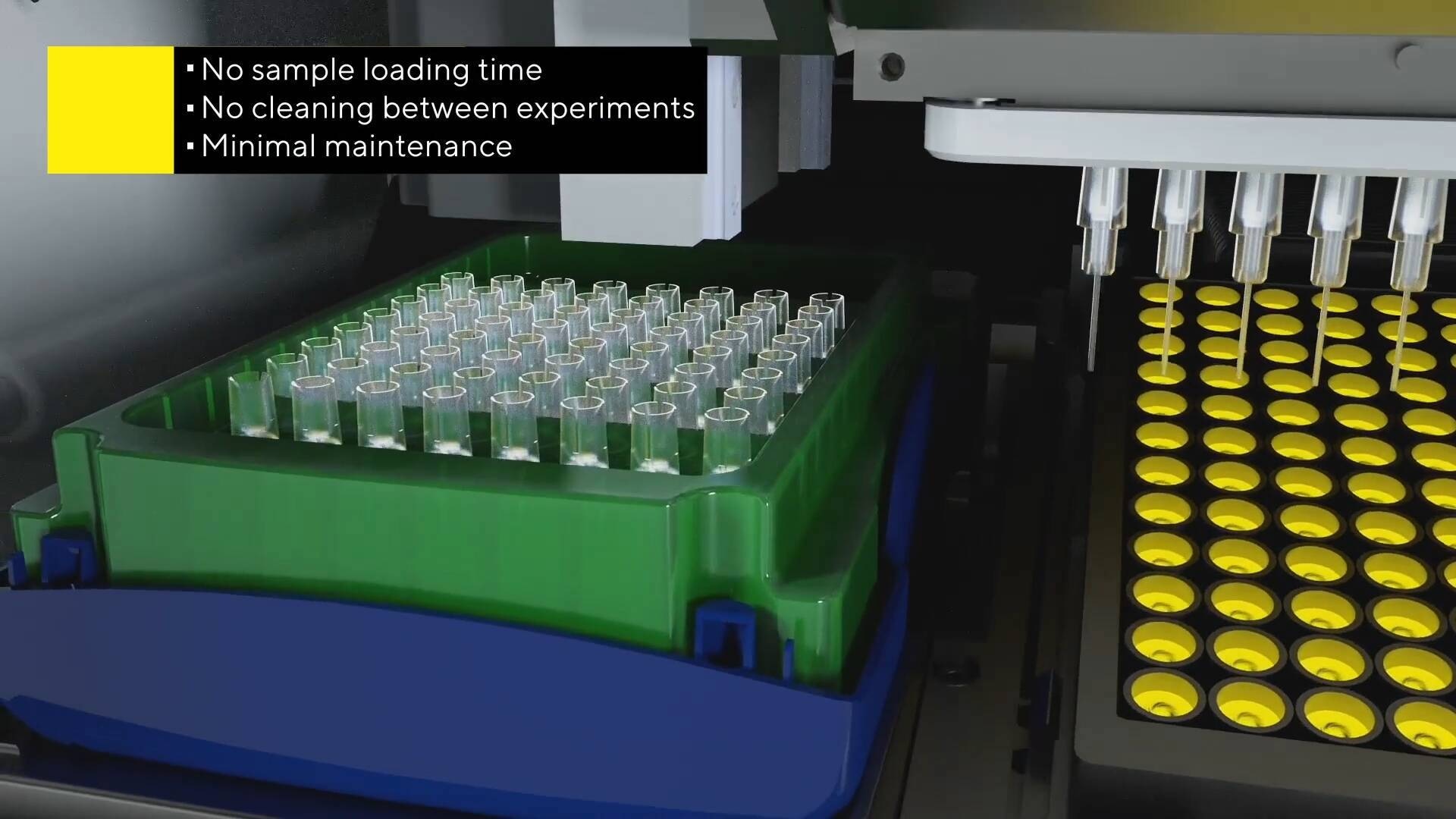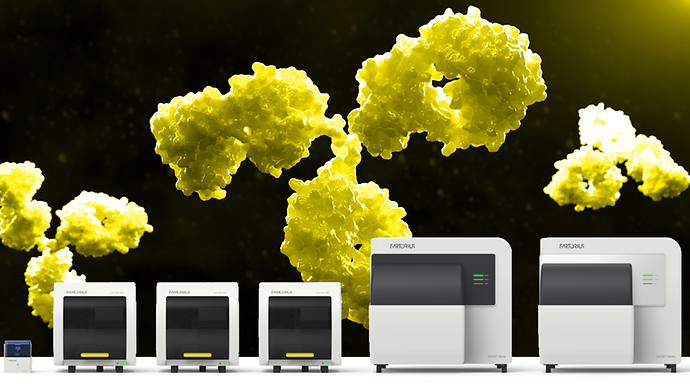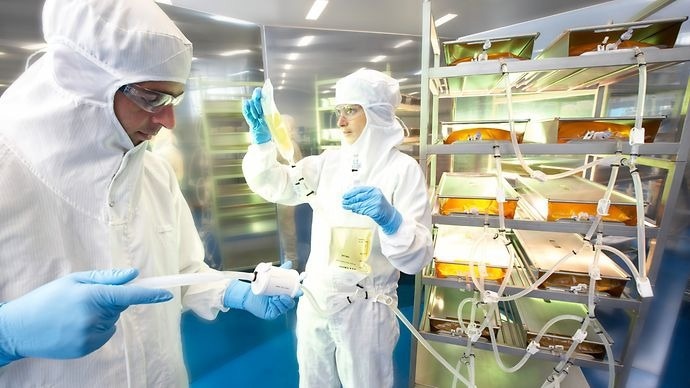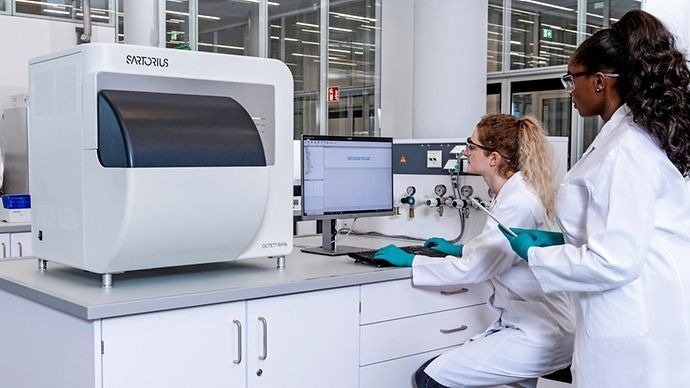Bio-Layer Interferometry is an analytical method that tracks the interference pattern of white light reflected from two surfaces; an internal reference layer and a layer of immobilized protein on the biosensor tip.
The binding of an analyte in solution to the immobilized protein (ligand) on the biosensor leads to an increase in optical thickness, which thereby results in a shift in the interference pattern leading to a wavelength shift.
This shift in wavelengths (nm) has been reported in real-time. Only molecules that associate or dissociate and result in a change in optical thickness evoke a response driving the boundaries of label-free biomolecular interaction analysis (BIA) regarding scalable flexibility, throughput, and sample compatibility.
Discover what makes fluidic-free Octet®️ BLI detection special

Video Credit: Sartorius Corporation
Sartorius solutions for BLI detection
Allow real-time, label-free analysis for the determination of affinity, kinetics, and antibody or protein quantitation.

Image Credit: Sartorius Corporation
Comes in an extensive range of surface chemistries for use in a varied set of biomolecular applications.

Image Credit: Sartorius Corporation
A broad range of compliance tools for developing authenticated assay techniques on the Octet® BLI platform.

Image Credit: Sartorius Corporation
Enable data acquisition and data analysis in labs working under GMP, GLP, and 21 CFR Part 11 regulations.

Image Credit: Sartorius Corporation